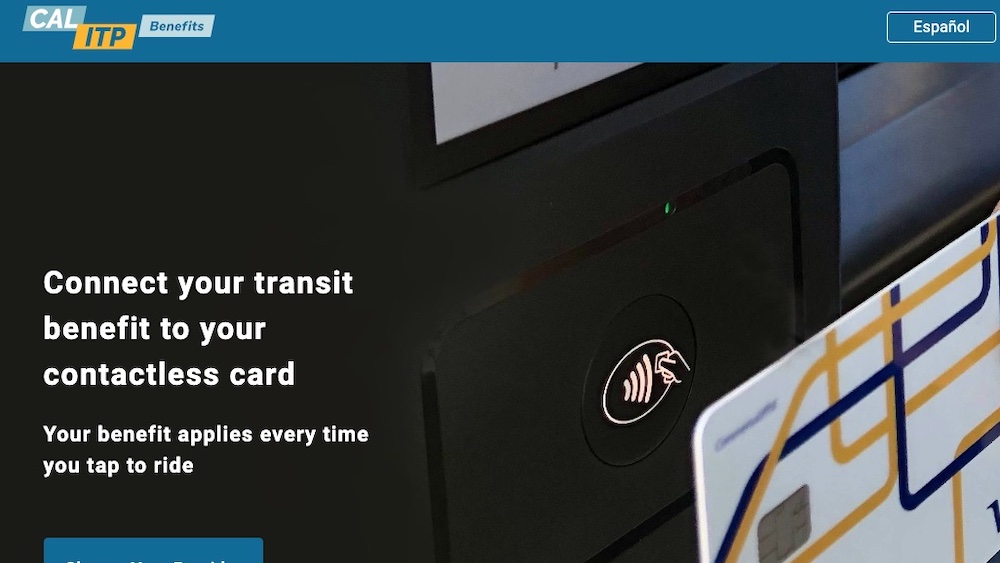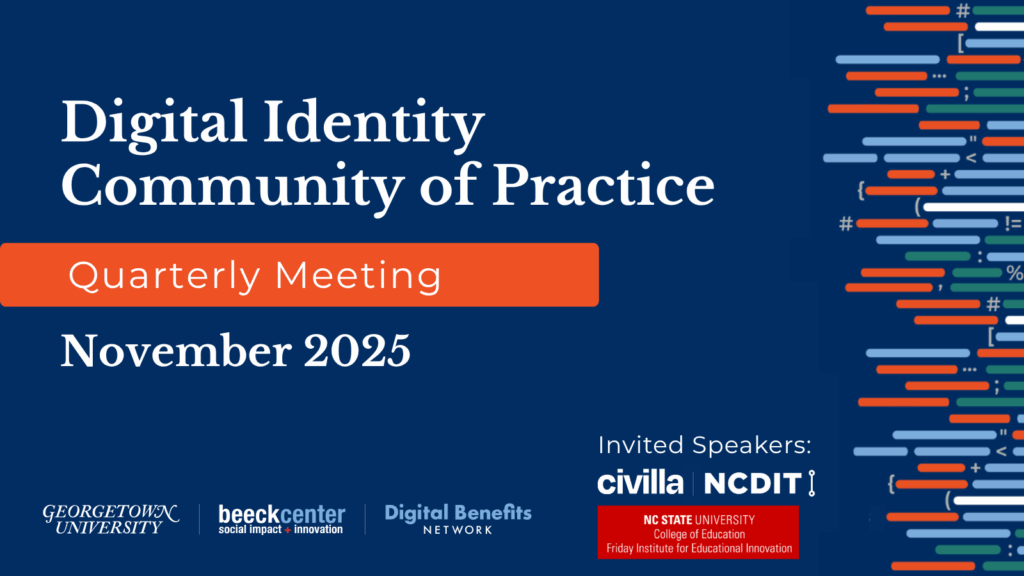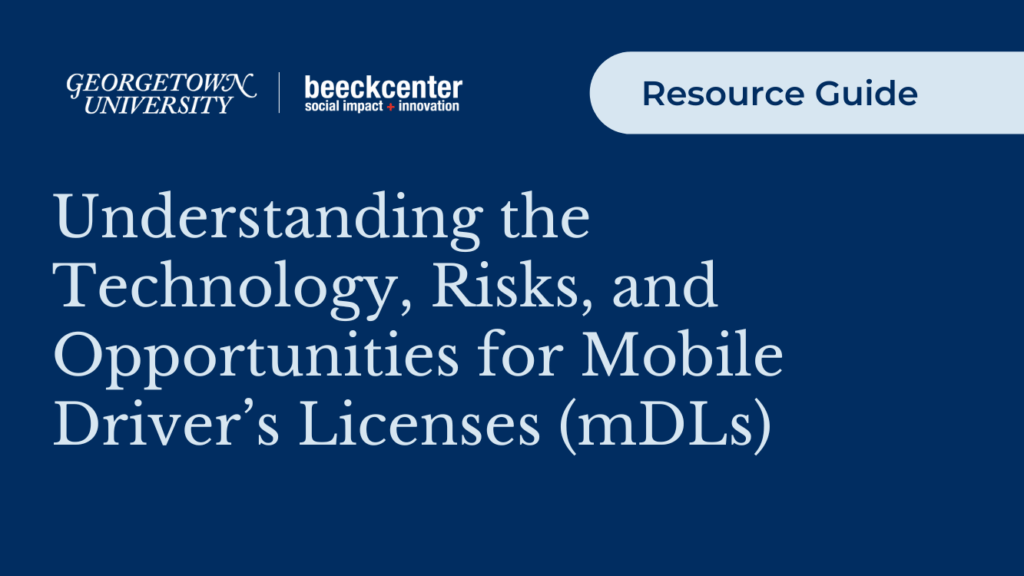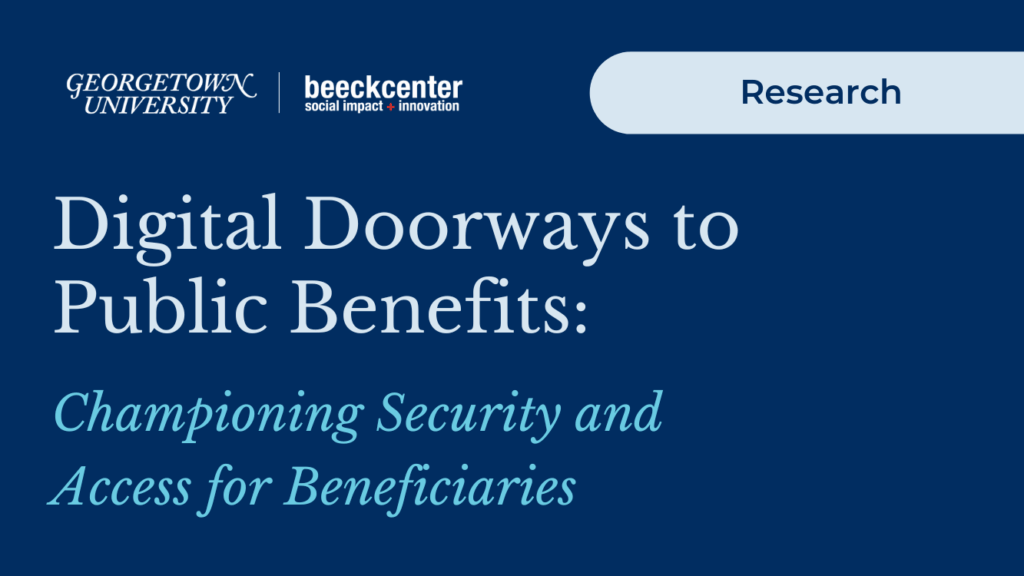Project Snapshot: Cal-ITP Eligibility Verification for Transit Benefits
The California Integrated Travel Project (Cal-ITP) simplifies transit benefits eligibility by developing the Benefits App, which uses Login.gov to securely verify age-based discounts for public transit riders. The project aims to create a standardized, interoperable system for verifying transit benefits, improving accessibility for low-income and special groups while reducing administrative burdens for transit agencies.

Problem Statement
Public transport customers across the United States may qualify for benefits based on their income, age, student status, disability, or other characteristics. These benefits typically come in the form of discounted fares. Transit agencies receiving federal grant funds are also required to offer half-priced fares during non-peak hours to seniors, individuals with disabilities, and Medicare recipients; however, there are no standardized eligibility rules, processes or systems through which to apply these benefits. Eligible riders have to navigate disparate and potentially complicated processes to receive transit discounts, making it difficult for low-income riders and other special groups to claim the benefits they are entitled to. A standardized, customer-friendly solution for verifying transit benefits eligibility can help agencies to better provide benefits while also improving the experience of riders who qualify for benefits.
Project Description
The California Integrated Travel Project (Cal-ITP) is a collaborative project between the California State Transportation Agency (CalSTA), the Capitol Corridor Joint Powers Authority (CCJPA) and the California Department of Transportation (Caltrans), funded by a grant from the California Transit and Intercity Rail Capital Program. Cal-ITP’s work aims to make it easier to access and use public transit, while working to alleviate the costs associated with payment system modernization and benefit administration, particularly for small and rural transit agencies. Since its launch in 2019, Cal-ITP’s team and contractors have worked with public transport users, transit agencies, the payments industry, the banking industry and other stakeholders to understand the needs of customers, the transit and mobility sector. As a result, simplifying transit benefits eligibility verification has emerged as one of Cal-ITP’s focus areas, alongside reducing friction in transit payments, and improving transit data.
In May 2021, Cal-ITP partnered with Monterey-Salinas Transit (MST) to launch a demonstration project of a contactless payment system on their buses. MST serves a population of over 437,000, operating across 159 square miles in Monterey County. MST’s clientele includes tourists visiting the city of Monterey, service workers in the city’s tourism industry, and local agricultural workers. The new open payment system allows users to pay their transit fare by tapping their contactless Mastercard or Visa debit, credit, or prepaid card or contactless enabled smartphone device, without the need to purchase or reload a specific transit card. This enabled MST to introduce fare-capping, which guarantees that users who rely on MST for their regular transport will not be charged more than the cost of daily, weekly, or monthly unlimited-ride passes, without having to pay the pass cost upfront.
Following the payment system demonstration project with MST, Cal-ITP launched a demonstration of its Benefits App in the fall of 2021. The web app enables digital eligibility verification and enrollment for transit benefits. Currently, it allows users over 65 who qualify for age-based discounts to verify their eligibility for a half-priced fare, and connect their benefits to their own existing contactless payment method. Initially, the App relied on data from California’s Department of Motor Vehicles (DMV); in subsequent stages of the demo with MST, Cal-ITP worked with the California Department of Technology (CDT) to integrate Login.gov, a secure account service administered by the federal-level General Services Administration, to verify users’ age. Implemented in September 2022, this shift changed the pool of users who could verify with the Benefits App to individuals with both a state-issued ID from any U.S. state/territory and a social security number. Additionally, because Login.gov is used for other federal services, including logging into Social Security Administration (SSI) services, and more recently became available to federally-funded state and local programs, transit riders using the Benefits App may already have a Login.gov account.
If a user is new to Login.gov, they can set up an account and “proof” their identity by uploading an image of their state-issued ID card, and providing their social security number and phone number. Login.gov then checks the user’s information against authoritative sources to verify whether they are over age 65. Importantly, the Benefits App’s integration to Login.gov is routed through CDT’s Identity Gateway. The Identity Gateway is meant to connect local agencies or programs to information from different identity providers (in this case Login.gov), allowing agency programs to verify relevant information about a user (e.g., age) without needing to access or store sensitive user information (like Social Security Numbers). From the verification process through Login.gov, the Benefits App only receives information about whether someone is or is not eligible for the senior fare discount. If the user is eligible, they are then directed to Littlepay, the payment processor, to link their benefits to their contactless payment method. The CDT’s October 2022 report provides more information on the identity gateway’s architecture. Cal-ITP’s documentation offers a visual demonstration of the Benefits App user experience. More information about the Benefits Application is available on Cal-ITP’s Github repository, as well as in Cal-ITP’s technical documentation, which includes a diagram of the Benefits App’s system interconnections.
Project Outcomes and Impact
Through the demo of the Benefits App with MST, Cal-ITP’s team has continued to refine their model of a standardized process for verifying benefits eligibility for transit riders. Members of Cal-ITP’s team said that they hope that the Benefits App can be deployed by other agencies and that automatic eligibility verification can extended to other groups, such as veterans, students, and those who receive other benefits, such as Medicare, by integrating other types of information into the Benefits App architecture.
Replicable Takeaways
A central eligibility system using an existing database or identity provider, such as Login.gov, could be used to improve experiences for riders who rely on predictable and low-cost transport; this model may also decrease the operational burdens and costs on transit agencies and their staff. Cal-ITP’s demo work on benefits also offers interesting models for standardized eligibility verification tools that can be used across agencies, and for integrating a shared identity verification service, like Login.gov into verification processes for different agencies and benefits. The project also demonstrates an architecture for integrating payment processors into a user’s eligibility verification experience, so that benefits are applied directly to a user’s existing payment method. Finally, the Identity Gateway model demonstrates how a statewide or other centralized service can connect multiple agencies with reliable information about users or applicants, from various identity providers, through a model that minimizes data storage and access needs.
Additionally, Cal-ITP’s overall project offers interesting models for procuring technology across agencies. For example, Cal-ITP’s Mobility Marketplace is a resource for transit providers seeking to procure software and hardware and currently hosts Master Standard Agreements to help transit providers upgrade to open-loop, contactless payment systems.The Marketplace includes guides to procurement, examples of products, and information about useful tools for providers.


